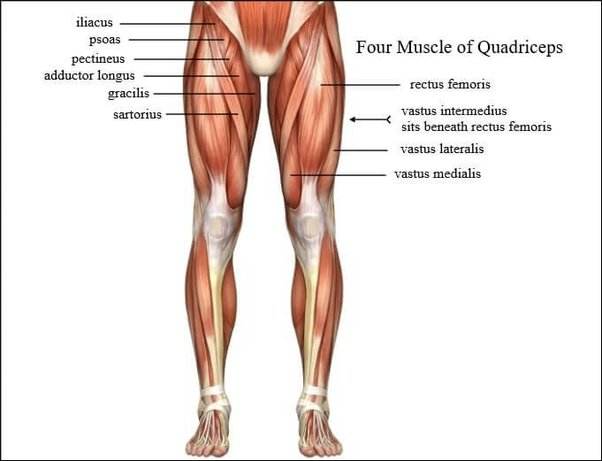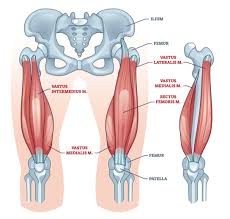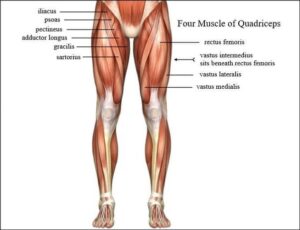

If you are like me, spending countless hours hunched over a computer or looking down at your phone, you have probably noticed some changes in your posture.
For me, this gradual forward head posture developed into something more visible—a buffalo hump.
While I initially thought this hump was just an aesthetic issue, I soon learned it had far-reaching consequences, including damage to my quadriceps. Yes, you heard that right.
A posture problem affecting my upper back ended up wreaking havoc on my quadriceps. How? Let’s dive into the details.
Article Index:
- What is Buffalo Hump Posture?
- How Does Buffalo Hump Impact Your Quadriceps?
- The Role of Forward Head Posture in Muscular Imbalances
- How My Quadriceps Suffered: Personal Experience
- The Science Behind Quadriceps Muscle Damage from Bad Posture
- Daily Habits That Contribute to Buffalo Hump and Quadricep Weakness
- FAQs on Buffalo Hump Posture & its Impact on Your Quadriceps
- Conclusion
What is Buffalo Hump Posture?
Buffalo hump posture, medically known as a dorsocervical fat pad, typically results from prolonged poor posture.
The forward-leaning posture, common among desk workers and smartphone users, leads to a rounded upper back, with a fatty deposit forming at the base of the neck.
While buffalo hump from bad posture might seem like a minor inconvenience, it is a sign of something much more severe—an imbalance in your body’s entire musculoskeletal structure.
The buffalo hump due to bad posture develops over time, as the body compensates for prolonged slouching and head-forward positions.
While it may start with discomfort in the upper back and neck, the effects can spread throughout the body, including down to the lower body and quadriceps.
How Does Buffalo Hump Impact Your Quadriceps?
You might be wondering, “How does a hump on my neck affect my legs?” The answer lies in the body’s interconnectedness.
Our body functions as a whole, and poor posture in one area can lead to compensatory movements and stress in other areas.
Buffalo hump posture, caused by forward head posture, throws off the body’s alignment.
This misalignment shifts the body’s center of gravity, which can place extra stress on muscles that shouldn’t be bearing that weight—including the quadriceps.
Over time, as I continued to live with this posture, my lower body began compensating for the misalignment of my upper body.
The extra strain placed on my quadriceps, especially during daily activities like walking and exercising, led to muscular imbalance in thighs and, eventually, muscle strain.
The Role of Forward Head Posture in Muscular Imbalances
The relationship between forward head posture and muscular imbalance is well-documented in scientific literature.
Forward head posture leads to a chain reaction in the body, where the muscles try to compensate for the shift in weight.
This imbalance affects not just the neck and shoulders but also the core and legs.
In my case, the persistent forward head posture caused my quadriceps to work harder to maintain balance.
This increased load led to chronic overuse, and before long, I was experiencing pain in my quadriceps that I hadn’t encountered before.
It was not until I consulted a specialist that I understood how the buffalo hump and forward head posture were causing these issues in my legs.
How My Quadriceps Suffered: Personal Experience?
Let me paint you a picture.
I was walking one day, minding my own business, when I felt an intense pain in my leg—a sharp, shooting discomfort that made me stop in my tracks. It wasn’t a simple muscle cramp.
After seeing a doctor, I learned that I was suffering from tendonitis of the quadriceps tendon due to overuse. But the most shocking part? This overuse was directly linked to my buffalo hump posture.
Years of forward head posture had weakened the muscles in my upper body, forcing my lower body—specifically my quadriceps femoris muscle—to pick up the slack. The constant strain on my quadriceps eventually led to tendonitis.
In more severe cases, this kind of overuse could lead to a quadricep muscle rupture or even a quadriceps tendon rupture.
My routine—walking, standing, even light jogging—was all it took to strain my quadriceps. It was a frustrating realization that something as seemingly unrelated as poor upper body posture could lead to severe lower body issues.
The Science Behind Quadriceps Muscle Damage from Bad Posture
The science behind this is fascinating but makes perfect sense. The body is like a well-designed machine, and when one part is out of alignment, the whole machine suffers.
A study published in the Journal of Orthopedic & Sports Physical Therapy explained that forward head posture can lead to significant changes in how the lower body muscles function, especially the quadriceps, as they overcompensate for the misalignment.
A 2018 study from The Journal of Biomechanics found that prolonged forward head posture alters the biomechanics of walking, with the body compensating for the shift in weight distribution.
Over time, this compensation leads to muscular imbalances, with the quadriceps bearing the brunt of the load, resulting in overuse injuries like tendonitis of the quadriceps tendon or, in severe cases, muscle or tendon ruptures.
Daily Habits That Contribute to Buffalo Hump and Quadricep Weakness
Let’s be honest: modern life is a breeding ground for bad posture. My buffalo hump posture did not happen overnight—it developed over years of sitting at a desk, staring down at my phone, and neglecting proper posture during exercise.
These daily habits slowly but surely contributed to the breakdown of my musculoskeletal system.
The constant forward tilt of my head, whether from looking at my computer or texting, exacerbated the imbalance.
It was not until I felt the pain in my quadriceps that I realized how my sedentary lifestyle was affecting more than just my upper back.
Even during workouts, the improper form in weight lifting, squats, and lunges added extra strain on my quadriceps, amplifying the damage.
I was not stretching or paying attention to posture, which worsened the strain. Quadricep stretch exercises were not part of my routine, which could have alleviated some of the tension building in my legs over time.
FAQs on Buffalo Hump Posture & its Impact on Your Quadriceps
Q1: How does buffalo hump posture affect the alignment of my hips and legs, impacting my quadriceps?
A1: Buffalo hump posture, characterized by excessive upper back rounding and forward head carriage, can shift your center of gravity forward. This shift forces compensatory changes in the lower body, often causing the pelvis to tilt and altering hip alignment. Such imbalances increase strain on the quadriceps as they work harder to stabilize the body during movement.
Q2: In what ways can prolonged buffalo hump posture lead to quadriceps muscle weakness?
A2: The altered posture changes normal muscle activation patterns. Because of pelvic tilt and hip misalignment, some leg muscles may become overactive while others, like parts of the quadriceps, get underused. Over time, this imbalance can weaken the quadriceps, reducing their strength and endurance.
Q3: Can buffalo hump posture cause tightness or stiffness in the quadriceps? How?
A3: Yes. Compensatory changes in gait and standing posture due to the buffalo hump can lead to abnormal loading of the legs. The quadriceps may tighten to compensate for instability or altered mechanics, resulting in stiffness, reduced flexibility, and discomfort during activities like walking or climbing stairs.
Q4: How does buffalo hump posture affect the coordination and function of the quadriceps during movement?
A4: By disrupting spinal and pelvic alignment, buffalo hump posture interferes with the normal firing sequence of muscles during movement. As per bestforwardheadposturefix.com, “this can impair quadriceps coordination, making movements less efficient and increasing the risk of fatigue or injury during physical activities”.
Q5: Could the pain or discomfort caused by buffalo hump posture indirectly contribute to quadriceps problems?
A5: Yes. Pain or discomfort from poor posture can cause individuals to adopt protective movement patterns, such as limping or uneven weight-bearing. These compensations place uneven stress on the quadriceps, potentially causing overuse injuries or muscle imbalances.
Q6: What role does addressing buffalo hump posture play in rehabilitating damaged quadriceps?
A6: Correcting buffalo hump posture helps restore proper spinal and pelvic alignment, which rebalances muscle activation patterns throughout the lower body. This correction is essential in rehabilitation because it reduces abnormal strain on the quadriceps, allowing for more effective strengthening and recovery.
Takeaway
In conclusion, the buffalo hump from bad posture did not just leave me with an unsightly bump on my upper back—it damaged my quadriceps in ways I never anticipated.
By shifting my center of gravity and forcing my lower body to compensate, my forward head posture led to severe strain and overuse of my quadriceps femoris muscle.
The result was painful and debilitating injuries, including tendonitis, and the potential for more severe damage like quadriceps tendon rupture or quadricep muscle rupture.
My experience underscores how interconnected our body truly is. Ignoring one part, like the upper back or neck, can lead to damage in other, seemingly unrelated areas.
If I could offer one piece of advice from my experience, it would be this: never underestimate the power of posture.
So, my aim was to fix my nerd neck asap using best forward head posture fix.
What starts as a minor posture issue can spiral into chronic pain and muscle damage, leaving you scrambling for answers.
References:

